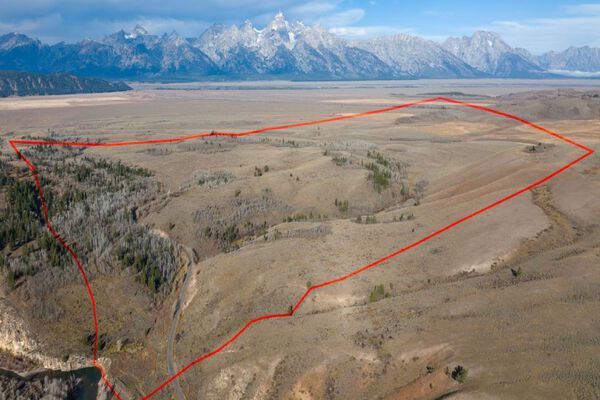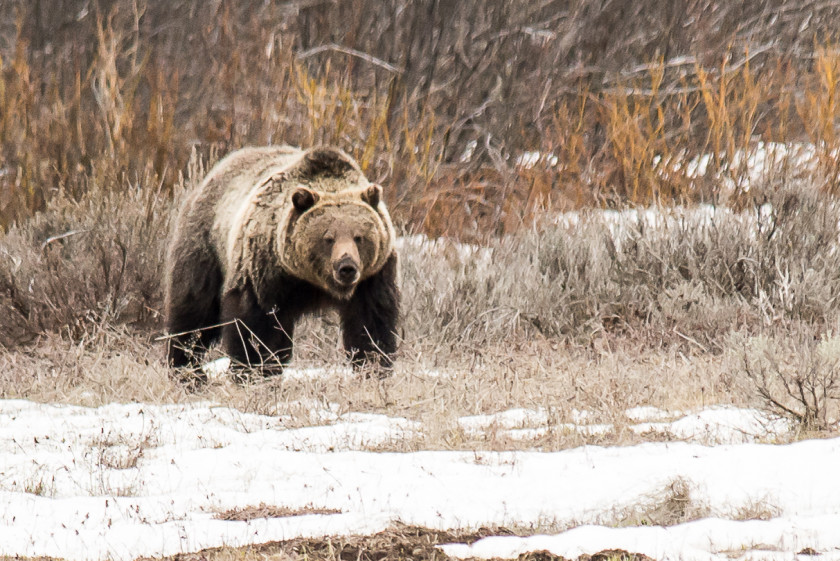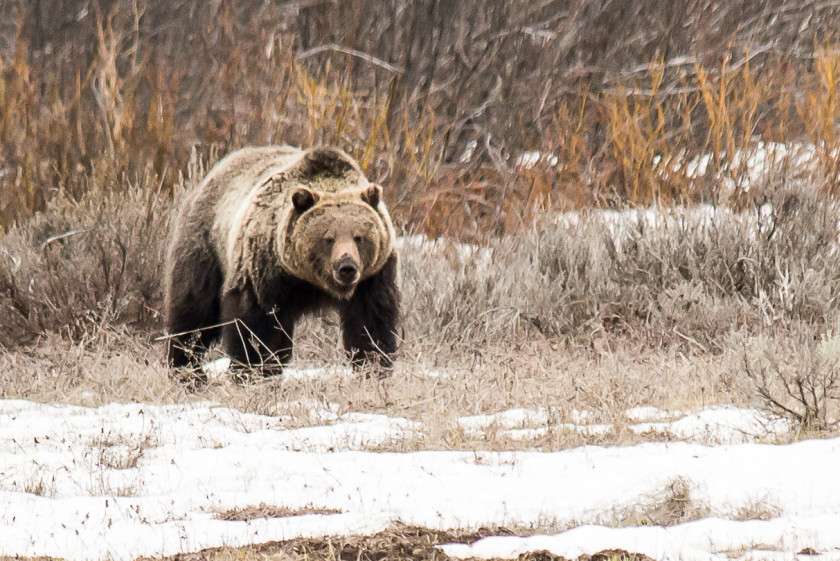This is a challenging time of year for wildlife as winter fat reserves have been depleted and new season plant growth is not yet underway, so energy conservation is a high priority. Please remember to give all wildlife plenty of room and don’t cause them to move or alter their activities while you are observing.
• The park’s well known grizzly bear 399, now 20 years old, could emerge with new cubs this spring. Female grizzly bears can have cubs well into their 20s.
• Grizzly bear 610, who is 399’s daughter and now 10 years old, had two cubs of the year in 2015 so should emerge with 2 yearlings this spring if they both survived the winter.
• Adult male bears are the first out of their dens, with more than half out and about by the end of March (tracks have been observed in some parts of the park already). Bears with new cubs are usually the last ones to emerge from their dens.
• With the snow pack receding quickly on the valley floor and rivers opening up, some bald eagles are already sitting on their nests. Many other wildlife species, including ravens, river otters, golden eagles, great-horned owls, and Canada geese will begin courtship and breeding activities soon.
• The first migrating birds of the season are beginning to show up – including western bluebirds, red wing blackbirds, red-tailed hawks, northern flickers, and robins. The first sandhill cranes, osprey, and others are not far behind.
• In the coming weeks, snowshoe hares and long-tailed weasels will begin to shed their white winter fur.
• Elk will start to drift north from the refuge, their progress following the receding snowline and grass green-up.
• Bull (male) elk grow a new set of antlers every year. They generally shed their antlers from March through April and begin growing a new set shortly thereafter. Larger bulls drop their antlers earlier than smaller bulls, especially spikes (yearling bulls) who may hang on to their antlers into May.
• Wolverines usually produce 1-2 ‘kits,’ as their young are called, that are born from mid-February – March. Females dig dens in high, remote alpine basins where the snow pack persists late into the spring. Here she raises the kits alone and stashes them when she goes out on forays for food. If undisturbed the female and kits may use the natal den until May.











